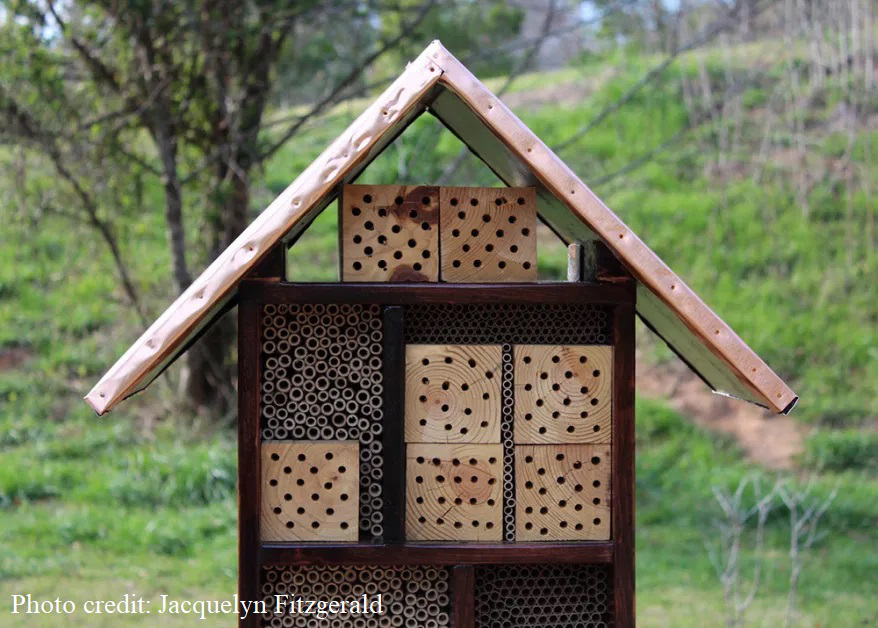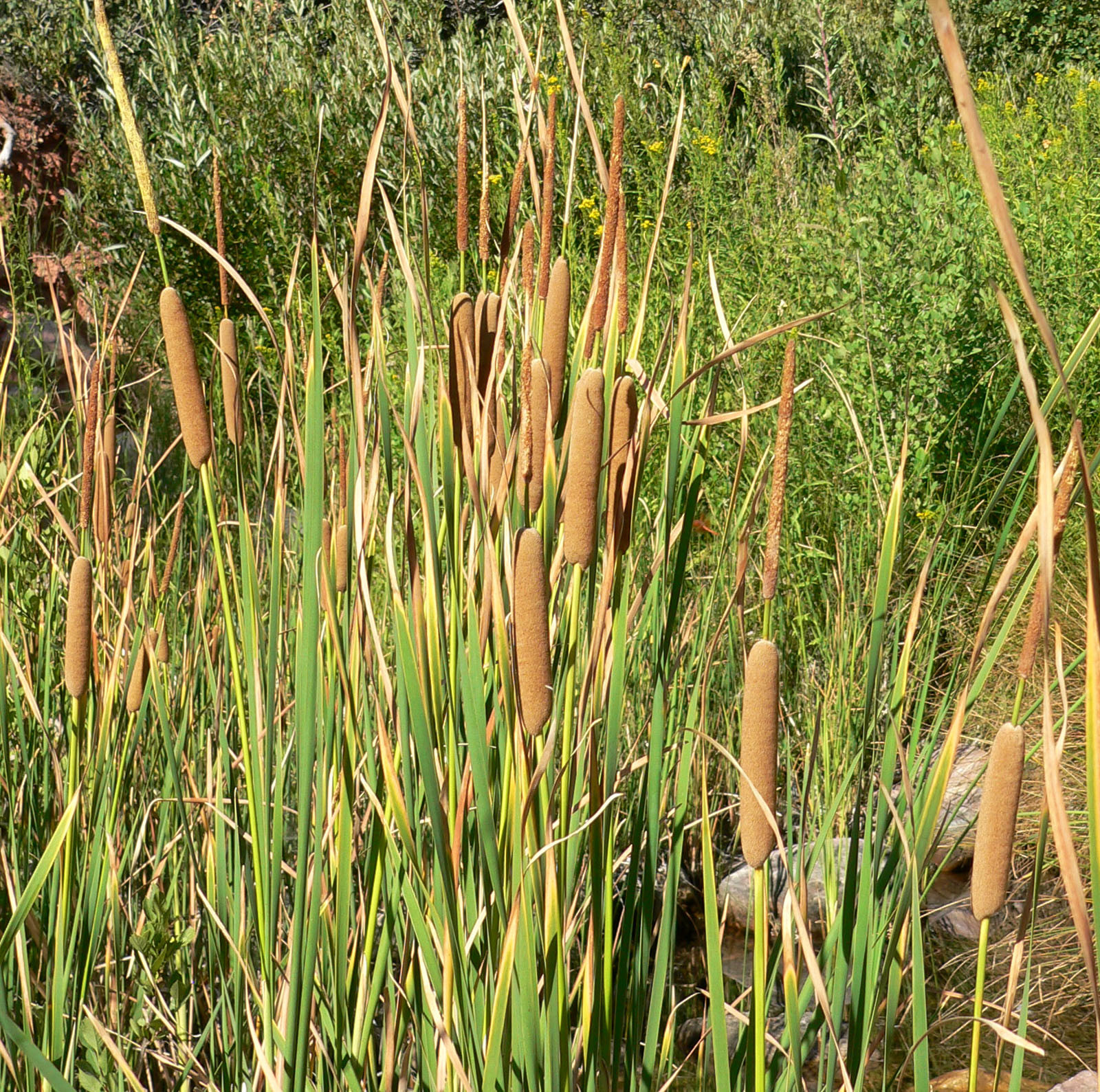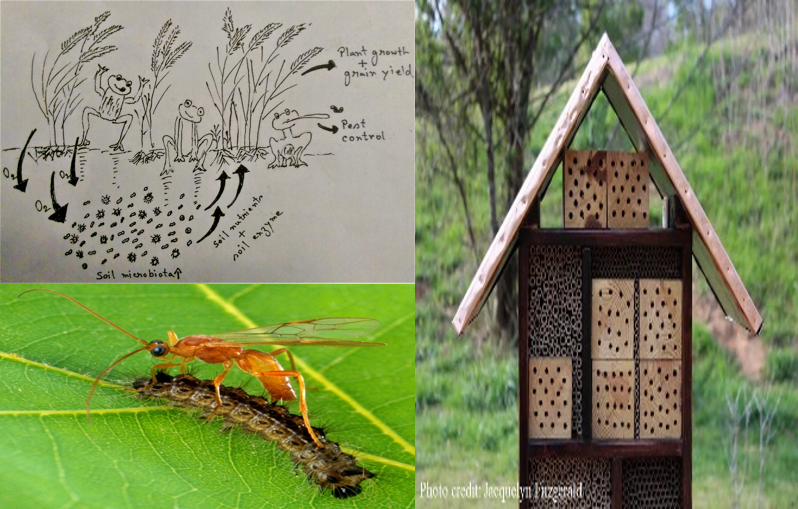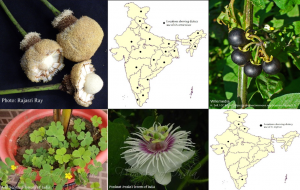A hotel for solo traveler….. visit the Bee hotel
By pronouncing “Bee” we imagine those tiny powerful creatures in a group with whom you cannot mess up, hexagonal bee hives with honey and wax, bee-keepers with their astronaut-like attires, and so on. However, here is more for your attention. Like, we know that they are pollinators responsible for the crop and fruit production, and they are also under threat due to multiple reasons. Well, what does the hotel do here?
The “Bee Hotel” is meant for those who are lonely with great foraging habits and are under the threat of a declining population. This is a temporary shelter for the bees to lay their eggs and nur-ture the young. The customers are mostly mason bees (Osmia spp.) famous for using masonry products (e.g. mud) for building their nests in naturally occurring gaps or tunnels. The hotel is providing them places like artificial holes or tunnels (made up of woods, papers, reeds, etc.) for completing their life cycle. A fairly common practice in the temperate countries, in early spring, queen bees come out from hibernation and become active in mating and nest selection. After mating, they go for nest modification like, making mud walls, collecting pollen and nectar for feed, laying egg over the stored food, and blocking the entrance for unwanted members. Gradually the larvae come out from the egg, feed on the stored items, make cocoons, and finally turn into adult bees. These adult bees leaving the hole, again start the life cycle as soon as possible due to their short life span. Bee hotel facilitates this reproductive phase, especially where nest building habitats are at risk or not available.
of a declining population. This is a temporary shelter for the bees to lay their eggs and nur-ture the young. The customers are mostly mason bees (Osmia spp.) famous for using masonry products (e.g. mud) for building their nests in naturally occurring gaps or tunnels. The hotel is providing them places like artificial holes or tunnels (made up of woods, papers, reeds, etc.) for completing their life cycle. A fairly common practice in the temperate countries, in early spring, queen bees come out from hibernation and become active in mating and nest selection. After mating, they go for nest modification like, making mud walls, collecting pollen and nectar for feed, laying egg over the stored food, and blocking the entrance for unwanted members. Gradually the larvae come out from the egg, feed on the stored items, make cocoons, and finally turn into adult bees. These adult bees leaving the hole, again start the life cycle as soon as possible due to their short life span. Bee hotel facilitates this reproductive phase, especially where nest building habitats are at risk or not available.
Given the current threat to pollinators and its impact on agriculture, the bee hotel offers an alternative means of conservation for native pollinator bees. Mason bees are a suitable candidate in this regard. Neither social nor in the honey production but, they are important for their pollination performance. Compared to honey bees mason bees have higher pollination capacity like 250-300 female bees can pollinate an entire acre of a fruit orchard.
On the flip side, how attractive and popular they are, bee hotels are not devoid of drawbacks. They have to confrot unwanted guests like wasps, ants, parasites, and birds who come for shelter and food (both the stored food and young larvae). A recent study also shows that bee hotel facilitates native wasp populations more than native bees. Moreover, it also raises concerns that the facility may act as a sink for the bee population due to the higher chance of parasite at-tack and faster disease spread among the densely packed bee rooms. It is also found that near-natural hotel sites are more favorable for native bees than sites in parks, rooftops, or community gardens. Therefore, cleanliness and locality are two important factors for our buzzing neighbors. Let’s see what more we can offer to nature’s solo travelers.
Image: Jacquelyn Fitzgerald
Collector: Rajasri Ray
Anurans – the quadruped soil engineers
Frogs are an integral part of agriculture throughout the world, although not visually appealing to many of us. The sticky legs, popped out eyes and remarkable spit make them unique as well as interesting subjects for study for centuries. Look at the frog inhabited rice fields. You may catch a view on frog preying on insects thus keep their population at check. However, you may not notice their silent, underground activities contributing simultaneously towards the enrichment of soil microbiota, increment in biochemical activities, and promoting plant growth. That’s something happening very close to our eyes but many of us may not be able to view – that is what a group of frog researchers uncover and help us to know.
subjects for study for centuries. Look at the frog inhabited rice fields. You may catch a view on frog preying on insects thus keep their population at check. However, you may not notice their silent, underground activities contributing simultaneously towards the enrichment of soil microbiota, increment in biochemical activities, and promoting plant growth. That’s something happening very close to our eyes but many of us may not be able to view – that is what a group of frog researchers uncover and help us to know.
They say that frog activities in the rice field are far more than traditional pest control services. In this micro-environment of the water-soil-rice plant world, every move of the frog like stirring and burrowing in the rice field, increases soil aeration, thus, enhancing oxygen in soil and water. As we all know, oxygen is a key factor for life, so abundant oxygen stimulates the growth of soil biotas like bacteria, fungus, and others. Beyond that, oxygen also facilitates organic compound mineralization i.e. biogeochemical cycle. Likewise, frog excreta is a good resource for organic compounds (e.g., ammonium NH4+) thus, raises soil quality. As a result, frog inhabitation stimulates soil enzyme activity and nutrient status which in turn promotes higher plant growth with greater grain yield.
Sounds like an eco-system engineer? yes, indeed. So in a quiet evening, passing through a grain-laden rice field, one may realize the relentless activities of these quadruped engineers who along with the farmers and other bewildering number of soil members ensure our food availability.
Source: Teng et al., Influences of introducing frogs in the paddy fields on soil properties and rice growth. Journal of Soils and Sediments, DOI 10.1007/s11368-015-1183-6
Image: Rajasri Ray
Collector: Rajasri Ray
The knowledge of natural biodiversity saves us billion

We are quite a penchant for tangible benefits that can be measured in terms of monetary value. Many a time intangible benefits derived from our environment are so obvious and well-impregnated into our daily lives that we tend to forget their overriding importance. The role of biodiversity often goes unnoticed in a similar vein, but the knowledge can be instrumental in designing ecologically and economically sustainable strategies. One such example is employing biological control of the pests of crops. Through biological control, scientists have greatly lessened the risk faced by many of the farmers living on the edge and spurred rural growth in marginal environments across the world. To implement such a program, these scientists have to be meticulous to inventory, test, select, and release natural enemies of insect pests that used to wreak a havoc. A deeper understanding of the natural history of the beneficial co-evolved insects is of utmost essential so to keep it ecologically viable.
A classic example of biological control of pests can be sought from the case of coconut scale or transparent scale (Aspidiotus destructor). It threatened the crops like coconut, bananas, and also avocado, breadfruit, cassava, guava, oil palm, sugarcane in the early Twentieth Century with a huge economic loss. Then in 1920, the control of the outbreak began, beetles from Trinidad and parasitic wasps from Java were introduced and positive results were immediately discernible. Of all, the ladybird beetle, Cryptognatha nodiceps (and later Cryptognatha gemellata) were the most efficient in bringing the scale rapidly under control. Consequently, coconut scale ceased to be an issue and a huge economic loss and crisis have been averted thereby.
There are many other examples to fit into these classic cases of biological control. And, the benefits accrued from the process can be enormous, at the tune of billions, so says a freshly baked study (Wyckhuys et al. 2020. https://doi.org/10.1038/s41559-020-01294-y) by an international group of researchers. They employed cutting-edge analyses to estimate the economic benefits ushered by nature-based contributions to productivity in over a century (1918–2018) and across 23 different Asia–Pacific geopolitical entities. They found that biological control resolved invasive pest threats in multiple non-rice food crops saving farmers in Asia a phenomenal amount (around US$14.6-19.5 billion) per year. They add further that scientifically informed biological control of 43 exotic invertebrate pests allowed 73–100% yield-loss recovery in food, feed, and fiber crops such as banana, bread-fruit, cassava, and coconut. The study hinging on agroecological innovations opened avenues for the ways to mitigate invasive pests, instill ecological resilience, and thereby sustainably intensify the production of global agri-food. These innovative approaches armed with a better scientific approach would help feed the world, conserve and use on-farm biodiversity, and improve farmers’ quality of life.
Image source: Public Domain, https://commons.wikimedia.org/w/index.php?curid=1214858
Collector – Avik Ray
Acorns, Nuts, Seeds, Tubers, Water Chestnut…….Pollens; …Pollens? Why not!
We, humans, have an intrinsic ability to experiment with the resources around, it appears to be true especially for food plants and animals. In the course of our evolutionary trajectory we have gathered and tasted acorns and nuts, harvested seeds, dug out roots and tubers, collected water chestnuts or fox nuts, fished, hunted and butchered wild animals, and so on. Therefore, it can be imagined that bright yellow or brown superbly attractive pollen-candies of Typha aka inflorescence were not unheeded.
nuts, fished, hunted and butchered wild animals, and so on. Therefore, it can be imagined that bright yellow or brown superbly attractive pollen-candies of Typha aka inflorescence were not unheeded.
Prehistoric investigations have also revealed the use of Typha as a prominent food source. The wetlands of China, especially the Lower Yangtze Region, are famous for early rice cultivation. Alongside rice, wetland amassed the members of Typha, so say the archeologists. The pollens of the plant, a rich source of protein, perhaps made a sumptuous luncheon or supper for the Neolithic people. That charged them with the required calorie to sustain longer in the hostile environment. But, the use of Typha as a food source has a rather older tradition buried in prehistory. Before this discovery, the preparation flour employing grindstones from various Typha or Brachipodium species have been found in Upper Palaeolithic Europe around 25000 years BP.
However, the eating Typha as well as using it otherwise continues to this day across the globe. The fleshy and fluffy stems of Typha are superb material in matting as seen in many cultures. Above all stand their food value and diverse culinary use. The rhizomes and lower stems, ripe and unripe inflorescence, mature pollens find their place in many local and ethnic cuisines. The young flower stalks can be cut off and removed from their sheaths, boiled or steamed to be eaten just like corn. The bright yellowish pollens, fine substitutes for flours, were yearned for. They can drape pancakes, baked bread, or biscuits in a lovely yellow color quite tempting for kids and adults alike. The usage of pollens as a food source has been observed in broad geographic regions including India, China, Iraq, New Zealand, South Africa, United States, Canada, and many tropical regions around the world, but not in Europe. The reason perhaps rooted in prehistoric adaptation, or maybe not. Why bother? The only thing we can now to crave for Typha pollen-ed pancakes or cookies and keep hunting for Typha pollen-candies.
Image source: Stan Shebs, CC BY-SA 3.0, https://commons.wikimedia.org/w/index.php?curid=10666956
Collector – Avik Ray



